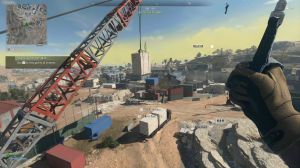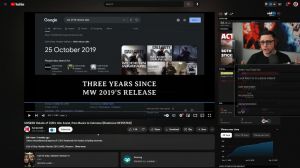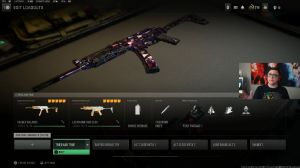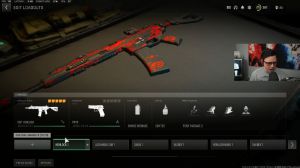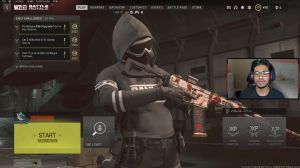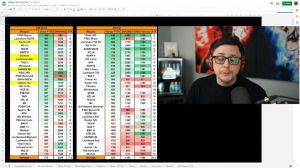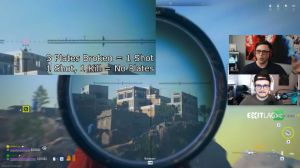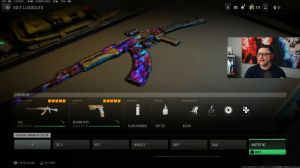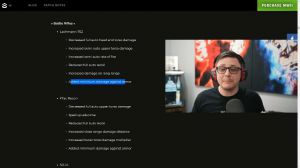News - Call Of Duty Warzone 2. 0 - Ps4/pro/xbox One/one X Showdown - Last-gen Competitively Disadvantaged
We're not committed to a lot of 60 fps by any stretch; it's not watertight, but for perspective, let's jump to a four-way split against the competition again. We're using spectator mode to see all four large end consoles render the same scene, and it paints a pretty complete picture. Note that the tearing indicator in our graph is disabled for Shear legibility, but both Xbox One consoles are tearing right at the top of the display base.
The Xbox One falls far behind the pack, as you'd expect, while the base PS4 is the next best option. Curiously. PS4's frame rate position is at times actually interchangeable; with the Xbox One X release, it's bizarre and pretty rare, but you'll notice foliage-dense areas actually put 1X behind PS4's reading, the main culprit likely being the fact 1X has an ambitious resolution.
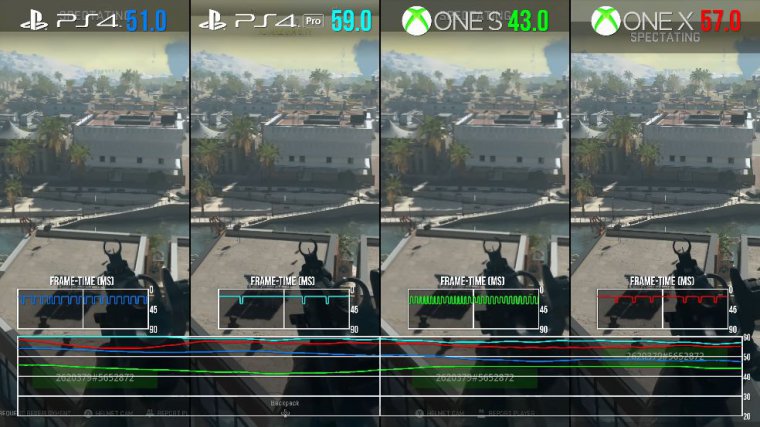
Target, just like in Modern Warfare 2 IX, aims for a full 4K image, though in Warzone 2's case it's dynamically just down to 1920 by 1080. The knock-on effect is moments where the 1X dips lower than you'd expect always, lower than the PS4 Pro, which has a more conservative resolution goal, and then even the base PS4 at rare moments, which is again pretty surprising.
The four-way comparison shows just how much of our master's detail is fundamental to all consoles. The geometric layout is exactly the same, in other words, "Shadow," and the detail is also surprisingly similar in outdoor grass. The draw distance is paired back on the base Xbox One and PS4 but not radically, so next to the Pro and 1X, we're talking a difference of about a meter of grass as we pan around this spot.
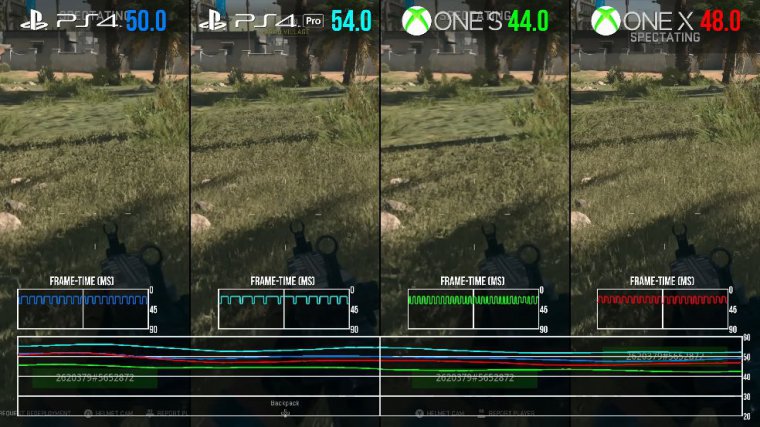
The biggest dividing point then, honestly, is the resolution between the four consoles; it puts the Xbox One far ahead in image quality. Clarity There's no question that long-scoped views across the world are better to find for the far-right image, except that It's also fair to say the PS4 Pro version is better balanced and better optimized for hitting 60 fps, which might be the bigger advantage in facing up to the competition running on much more adept hardware like Series X or PS5, which hit 60 fps or 120 fps.
It stands a chance, and again, of the four, it's the base Xbox one that stands out most, just obviously as the one that's best avoided. Turning back to just the base PS4 version in isolation for a second. One aside here: I want to address the "fov" setting for the field of view because Modern Warfare 2's default "80" setting is, let's face it, quite narrow and trims so much peripheral vision especially.
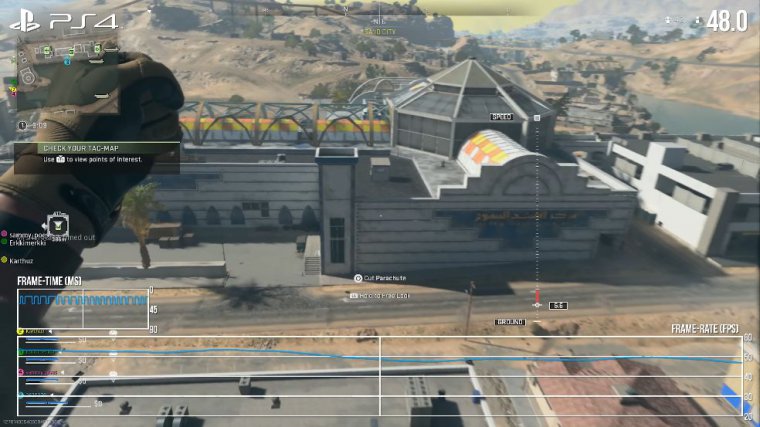
For a game as expansive as Warzone, where danger emerges from every angle, the question is: does bumping the FOV slider up for competitive reasons have any sort of negative impact on the frame rate? Well, here's what you're overlooking: The map to the Northwest PS4 At its default 80fov, the setting runs at around 56 to 57 frames per second now.
If we bump the field of view setting all the way up to 120 and then jump back to the game, it's actually about the same, possibly one frame low on average, partly a deal breaker, but then test number two does show a difference. If we stick with that 120-degree FOV setting and try looking towards the gas as it rolls in from the south, we're getting between 47 and 54 FPS, and then if we return to the default FOV, we gain back performance, pulling us up to 56 FPS again.
So the answer is that it really depends on the situation, but at points, putting more elements within the player's field of view will hit the frame rate harder, especially on systems like the PS4, which are already struggling A high FOV setting is harder to afford on last-gen GPUs while holding a lock 60, so it's perhaps a luxury reserved for more powerful consoles like Series X.
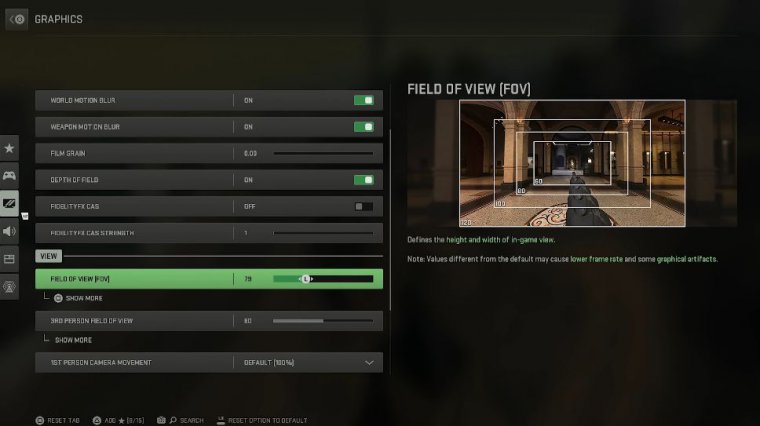
But that's not all, of course; in a four-way comparison showing all four Xbox consoles able to play Warzone 2, the full power spectrum is also laid out clearly, from the worst console of the group to one of the most powerful Xbox One 1X Series S and then Series X. It's easy to see how the net next-gen consoles reap the benefits of newer, faster architecture; they sustain a locked 60 fps for one frame, and density and draw are also both higher on the series machines compared to their older Xbox One equivalents.
Of course, the overall world detail is a match otherwise for competitive reasons, but certainly grass detail scales accordingly across the four machines. Though image quality on Series S isn't as sharp as the older one. Series S runs at a lower dynamic 1440p figure up against 1x's dynamic 4K, which leaves us with a lower pixel count on average for the newer machine without a doubt.
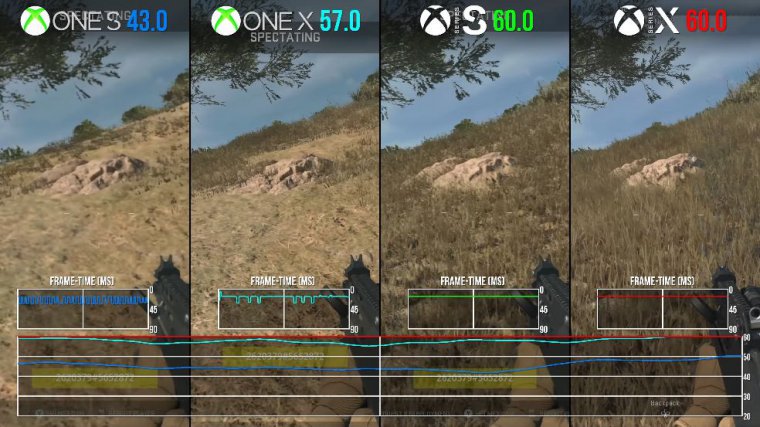
It's the smart use of Series S's power though if we're seeing a smoother 60 fps return. That overall makes it a better trade-off, even if distant detail isn't quite as sharp. Cheval impressive the fact we're seeing such a range of different machines output the same world is really remarkable, but there's a sense its true potential is being anchored to the past, especially looking at the old Xbox One attempting to tag along with the bottom line.
Warzone 2, however, doesn't hide Infinity Ward's intentions for the future. It's writ large in the sub-40 FPS drops on Xbox One, and even the texture pops in places where even the base PS4 has issues. It's a project that's clearly veering away from a last-generation Focus, not fully but close to it, in favor of building the best, most optimal experience for PS5 and Series X.
It also speaks to the future of the Call of Duty series, which, incidentally, skips an entire year in 2023. Warzone 2 will tie the series fans over in the interim until 2024 as a major cross-platform, cross-generation effort; in two years' time, the situation may well have changed, and looking at the status of consoles like the Xbox One.
I'm really hoping that it does.
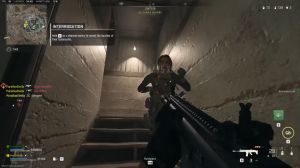
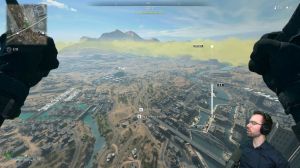
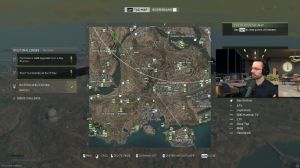

 PREVIOUS Page
PREVIOUS Page

